Chang Chau-Ting and the history of Institute of Atomic and Molecular Sciences of Academia Sinica
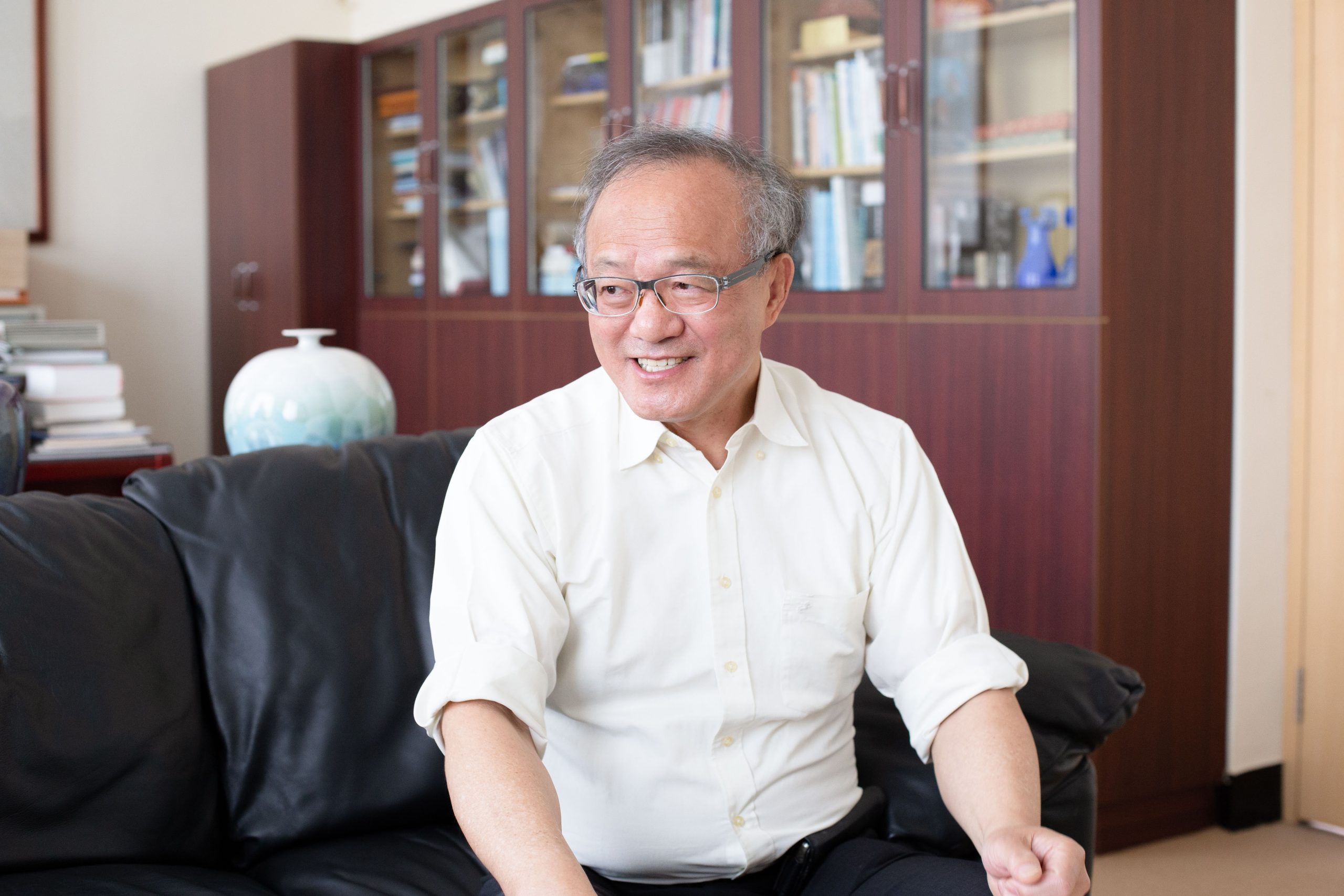 When the ResearchYoWu team and the Chang Chau-Ting Memorial Foundation visited, Kuei-Hsien Chen enthusiastically introduced the history of Institute of Atomic and Molecular Sciences and Chang Chau-Ting’s life.
When the ResearchYoWu team and the Chang Chau-Ting Memorial Foundation visited, Kuei-Hsien Chen enthusiastically introduced the history of Institute of Atomic and Molecular Sciences and Chang Chau-Ting’s life.
Picture|ResearchYoWu.
It was a sunny and warm afternoon that day. The ResearchYoWu team and the staff of the Chang Chau-Ting Foundation came to Institute of Atomic and Molecular Sciences of Academia Sinica at National Taiwan University to visit Director Kuei-Hsien Chen. Institute of Atomic and Molecular Sciences was located in the centre of the National Taiwan University campus, next to Zuiyue Lake. After the renovation of the front of the institute’s building, an elegant and novel red brick arch can be seen. As soon as he entered the office, Kuei-Hsien Chen was full of energy and seemed ready to share stories about Institute of Atomic and Molecular Sciences and Mr. Chang Chau-Ting with us.
There is a long way to go. Preparing for Institute of Atomic and Molecular Sciences of Academia Sinica
Institute of Atomic and Molecular Sciences was established in 1982, with Chang Chau-Ting as the first director of the Preparatory Office (1982-1993). The current director is Kuei-Hsien Chen, who has been the director for nearly 7 years (2016-2023). On July 15, 2023, the position of director will be handed over to Wei Jinming, a co-appointed distinguished researcher. When we asked how Institute of Atomic and Molecular Sciences was established in the first place, Kuei-Hsien Chen mentioned that Institute of Atomic and Molecular Sciences was an idea started by overseas scholars Yuan-Tseh Lee and Robert T. POE, hoping to help Taiwan develop the two major fields of atomic and molecular science, and synchrotron radiation science to follow the pace of international scientific research.
In order to make suggestions to the government, Yuan-Tseh Lee and other scholars invited world-renowned scientists to discuss the matter, including Wu Jianxiong and her husband, Yuan Jialiu. They also returned to Taiwan to give several lectures. After continuous communication and exchange, it finally happened. Robert T. POE was mainly responsible for synchrotron radiation (the centre was located next to Tsing Hua University in Hsinchu), while Yuan-Tseh Lee was trying to find a way to establish Institute of Atomic and Molecular Sciences.
Since Yuan-Tseh Lee was working in the Department of Chemistry at the University of Berkeley in the United States at the time, he urgently needed a trusted person to help him in Taiwan. Therefore, he approached National Taiwan University President Chang Chau-Ting, whom he had met while studying, and asked him to be responsible for preparing Institute of Atomic and Molecular Sciences. Chang Chau-Ting was already a pioneer in inorganic synthetic chemistry in Taiwan at that time. Kuei-Hsien Chen recalled, “Chang Chau-Ting was a structured person who also understood the need for grassroots.”
Setting up an office is not easy. There are many tasks to deal with, such as location selection, which is a major issue. Yuan-Tseh Lee hoped to promote cooperation between Academia Sinica and universities so that young students could also participate in research. Finally, he chose a location in the centre of National Taiwan University, and Institute of Atomic and Molecular Sciences was established. “It is a great blessing for young people who are interested in science,” said Kuei-Hsien Chen.
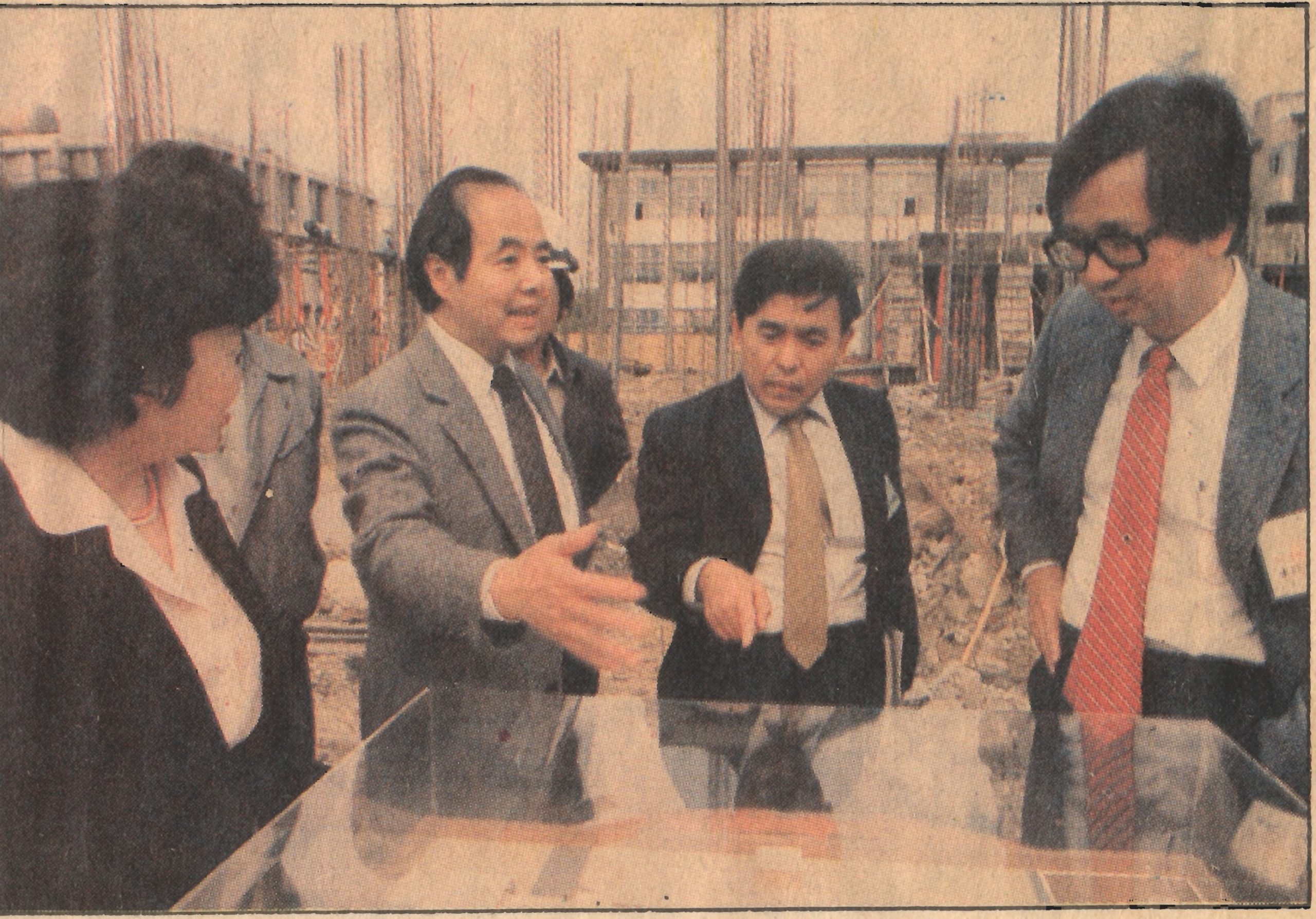 The construction site in the early stages of preparation for Institute of Atomic and Molecular SciencesInstitute of Atomic and Molecular Sciences in 1982. In the photo, from right to left, Yuan-Tseh Lee, Chang Chau-Ting, and Tsung-Dao Lee are discussing.
The construction site in the early stages of preparation for Institute of Atomic and Molecular SciencesInstitute of Atomic and Molecular Sciences in 1982. In the photo, from right to left, Yuan-Tseh Lee, Chang Chau-Ting, and Tsung-Dao Lee are discussing.
Picture | Kuei-Hsien Chen
Institute of Atomic and Molecular Sciences: a research centre based on atoms
By the way, what does the Institute of Atomic and Molecular Sciences study? It does not look like an ordinary mathematical academic institution such as physics, chemistry, or mechanics. Kuei-Hsien Chen said with a smile during the interview, “All substances are composed of atoms. When two atoms are combined together, they become molecules. If the molecules continue to stack together, they will form solid, gaseous, or liquid substances.” Institute of Atomic and Molecular SciencesInstitute of Atomic and Molecular Sciences studies material science related to atoms. However, Kuei-Hsien Chen emphasised that there are various basic particles within atoms, such as protons, neutrons, or quarks. The study of these basic particles belongs to high-energy physics and is not within the scope of Institute of Atomic and Molecular SciencesInstitute of Atomic and Molecular Sciences.
For example, the research includes semiconductors, which everyone is familiar with, and an important field called “surface science.” Kuei-Hsien Chen said that many chemical reactions will occur on the surface of materials. The way sunlight interacts with surface atoms is a phenomenon particularly worth exploring. Thus, his laboratory is studying how to carry out artificial photosynthesis through photocatalytic materials.
Another important area of Institute of Atomic and Molecular SciencesInstitute of Atomic and Molecular Sciences is “chemical reaction dynamics.” Kuei-Hsien Chen mentioned that when Yuan-Tseh Lee returned to Taiwan, he brought back precious cross-molecular beam equipment from Berkeley. The nozzle of the device will eject two different molecular beams, allowing the molecular beams to cross-collide and observe the dynamic mechanism of the chemical reaction. “Understanding how chemical reactions occur makes it possible to further control them,” Kuei-Hsien Chen said. He took the combustion reaction as an example; the big question was how to make the combustion reaction more complete and reduce the production of pollutants.
In addition, Kuei-Hsien Chen also shared two other important fields, “cutting-edge materials” and “biophysics.” Cutting-edge materials such as energy materials, including solar materials or thermoelectric materials, will provide more opportunities for future energy development. Biophysics, for example, studies analytical methods for biological images and develops various innovative microscopy techniques.
To this day, the development of Institute of Atomic and Molecular SciencesInstitute of Atomic and Molecular Sciences is still influenced by Chang Chau-Ting’s way of life, even after he passed away in April 1993. Kuei-Hsien Chen recalled that when he came to Institute of Atomic and Molecular SciencesInstitute of Atomic and Molecular Sciences in January 1993, before starting his long-term academic career, he learned about Chang Chau-Ting’s deeds and personality, and found that he valued the talents of the grassroots, was willing to give young people opportunities, and even helped find resources.
As different directors took over, the system and norms of Institute of Atomic and Molecular SciencesInstitute of Atomic and Molecular Sciences gradually improved. With the efforts of directors such as Lin Shengxian, Liu Guoping, Wang Yulin, and Zhou Meiyin, Institute of Atomic and Molecular SciencesInstitute of Atomic and Molecular Sciences gradually entered a state of stable development. In order to commemorate Chang Chau-Ting, Wang Yulin (director at the time) named the conference hall on the 4th floor the “Chang Chau-Ting Memorial Lecture Hall.”
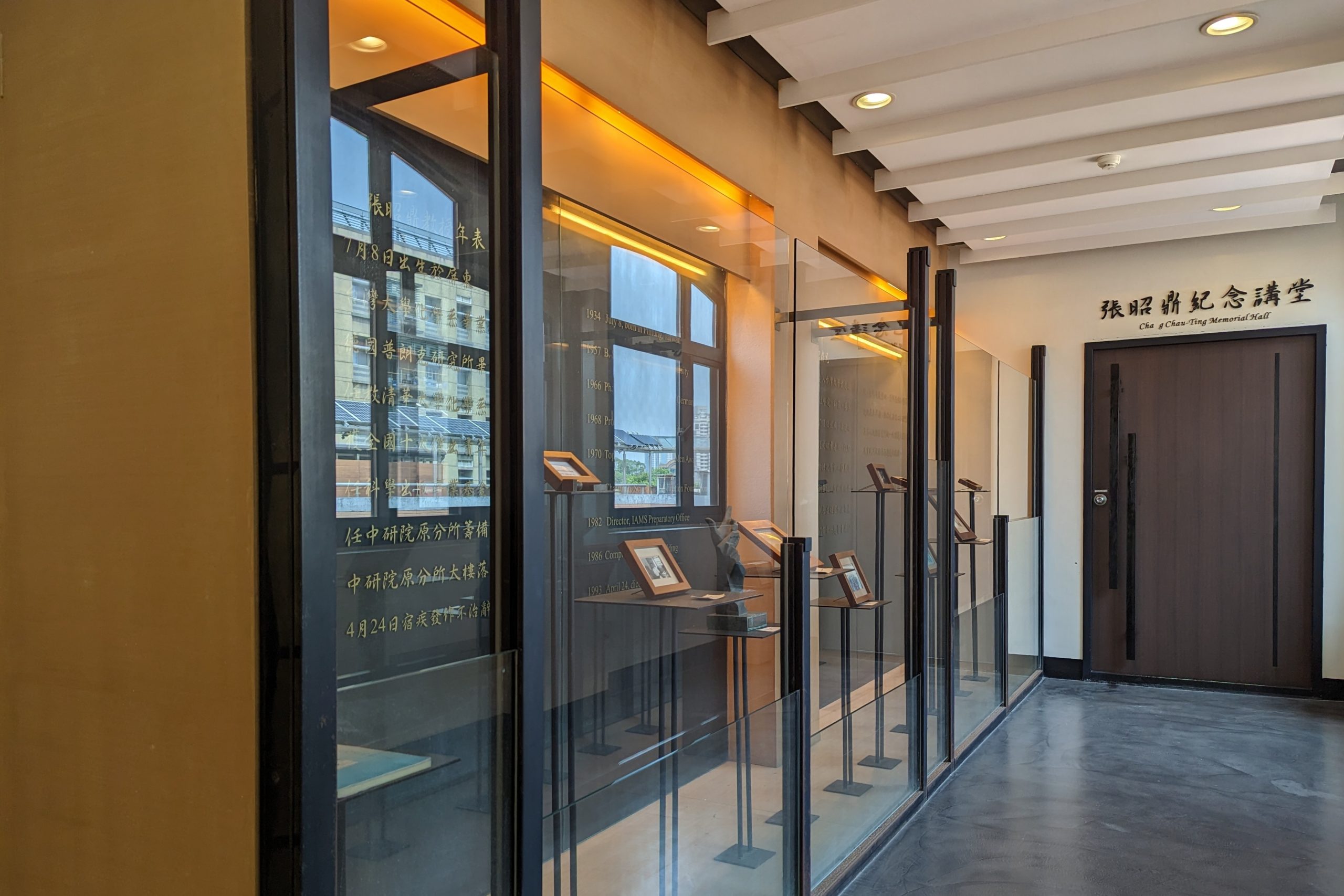 Picture of the Chang Chau-Ting Memorial Lecture
Picture of the Chang Chau-Ting Memorial Lecture
Hall |ResearchYoWu
Science Education and Promotion: Longest-serving Chairman of Science Monthly
In addition to establishing Institute of Atomic and Molecular SciencesInstitute of Atomic and Molecular Sciences, Chang Chau-Ting’s other important contribution was Science Monthly. Science Monthly is a science magazine born from Taiwan’s local power. It has been in operation since 1970. It is a precious science communication publication and has a good influence on talent cultivation and academic exchanges in Taiwan’s scientific community.
Regarding the importance of Science Monthly to Taiwan’s early scientific community, Kuei-Hsien Chen said: “The scientific research you do is to publish results internationally whilst simultaneously hoping more people of the next generation will be interested in science. At that time, I believe Science Monthly was almost the only choice.”
Chang Chau-Ting was the longest-serving chairman of Science Monthly (1973-1993). The early 1970s (the early years of the magazine) were the most difficult financial period for Science Monthly. There was even an internal idea of suspending publication in 1973. Chang Chau-Ting and the board of directors’ final decision was to preserve Science Monthly but hand over the magazine business to others for distribution. This decision had a lasting impact, allowing Science Monthly to survive the difficult 1970s.
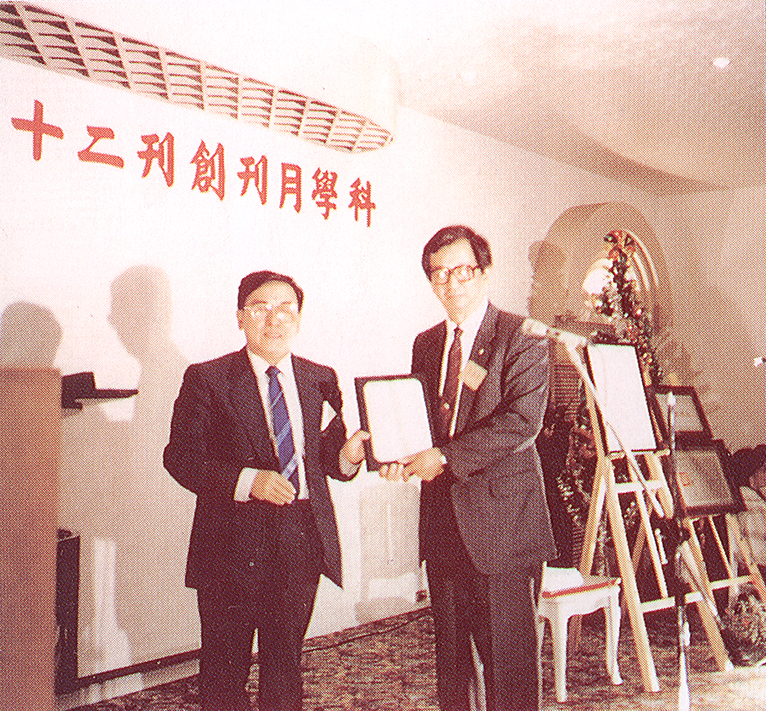 Chang Chau-Ting (left) and Yuan-Tseh Lee (right) pose for a photo at the dinner commemorating the 20th anniversary of the founding of Science Monthly. Picture | Chang Chau-Ting Memorial Foundation
Chang Chau-Ting (left) and Yuan-Tseh Lee (right) pose for a photo at the dinner commemorating the 20th anniversary of the founding of Science Monthly. Picture | Chang Chau-Ting Memorial Foundation
However, Chang Chau-Ting unfortunately passed away in 1993. His death was a huge shock to his friend, Yuan-Tseh Lee. Kuei-Hsien Chen mentioned that Yuan-Tseh Lee once wrote in an article in memory of his old friend, “Maybe it’s really time for me to return to my hometown.” Many people initially thought that he was only returning to Taiwan temporarily, but they did not expect Yuan-Tseh Lee to actually stay in Taiwan and continue to contribute to Institute of Atomic and Molecular SciencesInstitute of Atomic and Molecular Sciences, the academic community of Academia Sinica, and Taiwanese society.
After Chang Chau-Ting passed away, the Chang Chau-Ting Memorial Foundation was established the following year. The foundation inherits Chang Chau-Ting’s spirit and actively promotes science education. Under the initiative of academician Yuan-Tseh Lee, the foundation held the “Marie Curie High School Chemistry Camp” for the first time in 2011 (today’s Marie Curie Science Camp). The Marie Curie Science Camp mainly targets high school students who are interested in mathematics, physics, and chemistry. During the four-day camp activities, important scholars are invited to give special lectures, and group experiments are specially designed to allow students to gain a first-hand understanding of scientific research.
Kuei-Hsien Chen shared that the main preparation for the camp was originally at Tsing Hua University. Later, the director of the Chang Chau-Ting Foundation hoped to move the camp activities to Taipei with the combined efforts of Academia Sinica, Taiwan Normal University, and the Chang Chau-Ting Memorial Foundation. In gratitude for Chang Chau-Ting’s contribution to Institute of Atomic and Molecular SciencesInstitute of Atomic and Molecular Sciences, Kuei-Hsien Chen could not have said it andy better and fully supported. Since 2020, the Marie Curie Science Camp has successfully been held in Taipei.
Remembering Chang Chau-Ting: a scientist across ethnic groups and classes
Kuei-Hsien Chen, who had served in Institute of Atomic and Molecular SciencesInstitute of Atomic and Molecular Sciences for many years, had a very deep impression of Chang Chau-Ting’s conduct in life, although he had only spent a short time with him. Kuei-Hsien Chen believes that the reason why Chang Chau-Ting understood the needs of the grassroots is precisely because he has endured hardship. He was born into a poor family and spent almost all of his childhood in war; and when he learned that his mother was related to the “Duck King,” Zhu Yigui, Chang Chau-Ting was also always reminded to maintain a rebellious mind that does not follow the crowd.
Kuei-Hsien Chen: “He was not a scientist locked in an ivory tower. He was a worldly person who cared deeply about society.”
Not only was Chang Chau-Ting influential in academia, but he also made extensive friends in society, knew many people from the ruling and opposition parties, and established friendships with them. Kuei-Hsien Chen mentioned that this was also the reason Yuan-Tseh Lee invited Chang Chau-Ting to serve as director of the preparatory office of Institute of Atomic and Molecular SciencesInstitute of Atomic and Molecular Sciences: because he valued his connections and social participation ability.
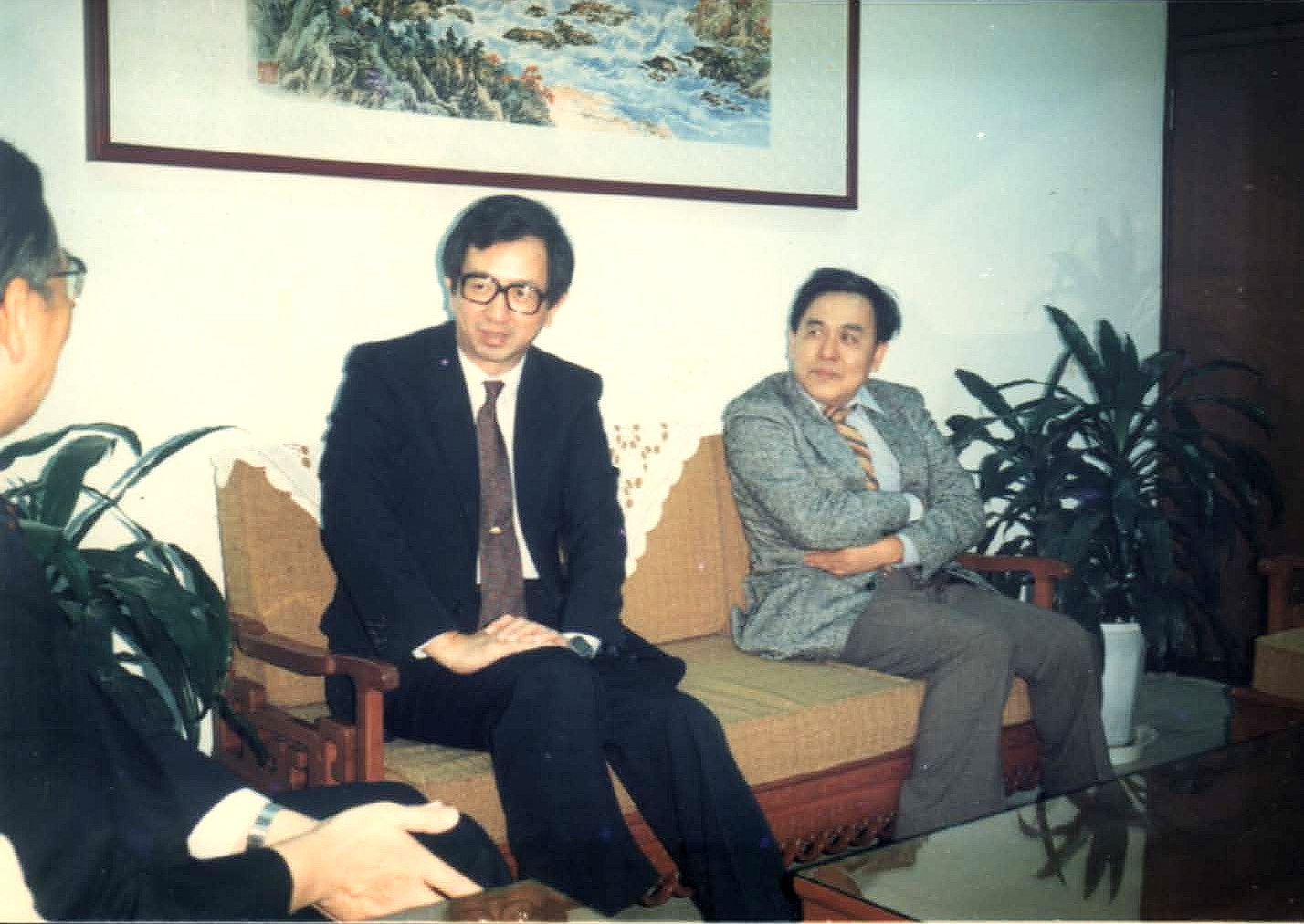 Chang Chau-Ting (right) is the most beloved friend of Yuan-Tseh Lee (left) and has a wide network of contacts.
Chang Chau-Ting (right) is the most beloved friend of Yuan-Tseh Lee (left) and has a wide network of contacts.
Picture | Kuei-Hsien Chen
In addition to having a wide network of contacts, Chang Chau-Ting also strived to make proper use of resources. Kuei-Hsien Chen said that a colleague who graduated from the University of Chicago once recalled that when Chang Chau-Ting went to Chicago to recruit talents, the hotel he stayed in was a YMCA Youth Hostel! Although Institute of Atomic and Molecular SciencesInstitute of Atomic and Molecular Sciences office had relatively sufficient funds during the preparatory stage, Chang Chau-Ting insisted not to waste them and used the people’s tax dollars to purchase the most needed equipment instead. “His persistence is admirable,” Kuei-Hsien Chen said.
Kuei-Hsien Chen then recalled that during the preparations for the establishment of Institute of Atomic and Molecular SciencesInstitute of Atomic and Molecular Sciences, Chang Chau-Ting often had conflicts with the administrative system because the administration staff believed that only what was permitted by law could be done. Chang Chau-Ting tried to find reasonable negotiation space within the law, so he also helped break through many public procurement obstacles and improve government service efficiency during the preparation process of Institute of Atomic and Molecular SciencesInstitute of Atomic and Molecular Sciences.
Kuei-Hsien Chen believes that Chang Chau-Ting was an activist who went beyond the borders of ethnic groups and classes. He crossed ethnic groups, meaning that Chang Chau-Ting was from southern Fujian and Taiwanese, but he would not limit his social participation to ethnic groups such as his own province, Hakka/southern Fujian. Crossing classes, he came from a poor family and was not from a privileged or aristocratic family, but he had stepped out of the box and joined the world, and he was willing to serve the grassroots and be served by the grassroots.
Kuei-Hsien Chen finally said with emotion that Chang Chau-Ting was a person who spanned different classes and ethnic groups. It was a pity that he left so soon. Next, Kuei-Hsien Chen shared a Taiwanese song he once wrote down and hummed during the interview in memory of Mr. Chang Chau-Ting.
La la la la La la la la
La la la la La la la la
Only sweet potatoes that land in the soil
Will be born
Waiting for spring’s rain
New hope
Kuei-Hsien Chen explained that the meaning of this song is that sweet potatoes must be placed in the soil before they will grow new leaves and wait for the rain in spring. When the spring rain comes, it is a new era. On the road of life, some people stay longer, and some people go away faster. Although Mr Chang Chau-Ting is no longer here, there will be a new generation behind him, just like the sweet potatoes that represent Taiwanese people, who will persist in the sweet potato spirit and pass it on.
陳貴賢解釋,這首歌的意思是說,地瓜要放進泥土裡面,才會長出新的葉子,並等待春天的雨水到來。當春雨來的時候,就是一個新的世代。人生路途中,有些人留得比較久,有些人走得比較快。像張昭鼎先生雖然不幸離開,但後面會再有新的一代,就像代表臺灣人的地瓜一樣,堅持著地瓜精神,一直延續下去。
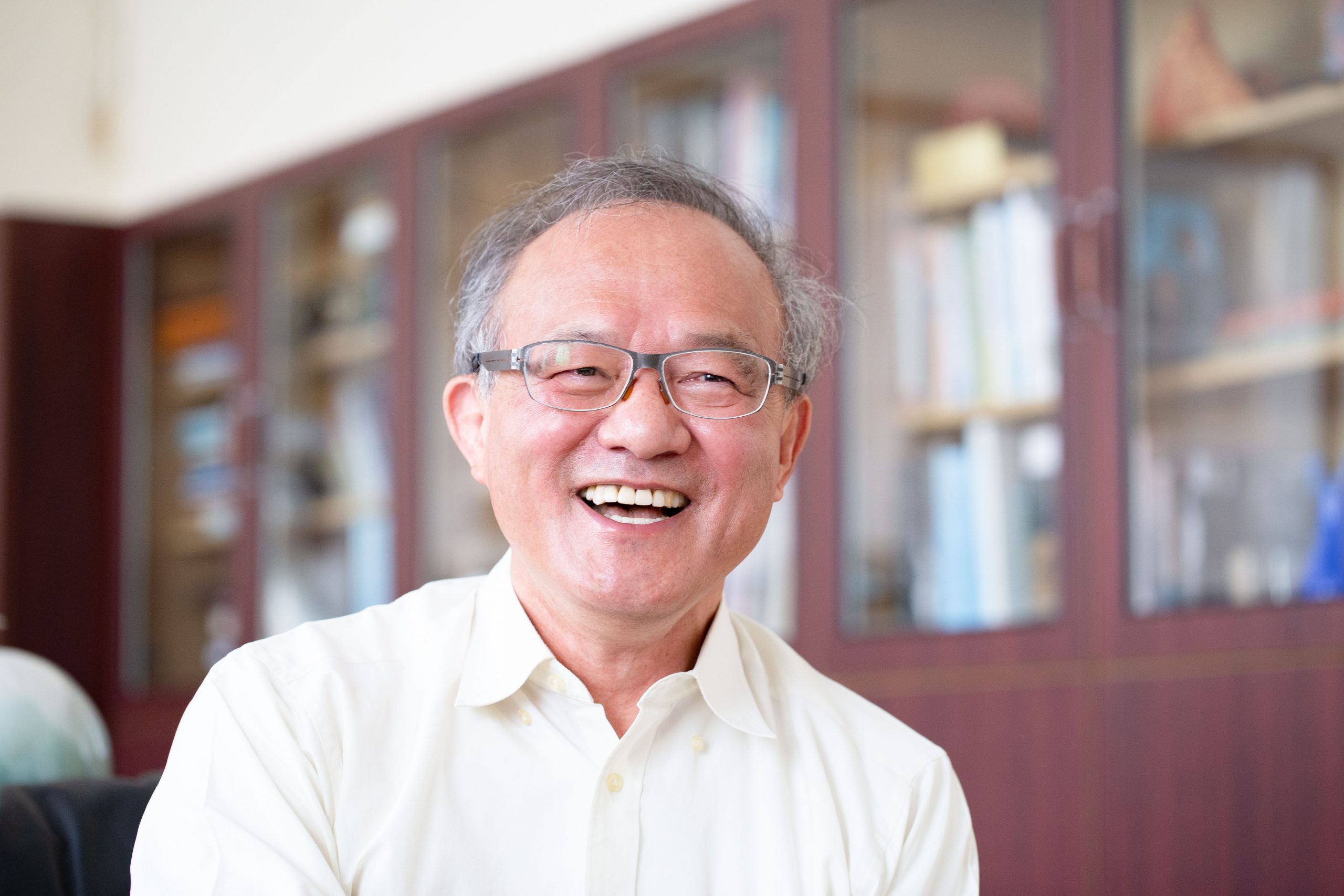 Kuei-Hsien Chen believes that Chang Chau-Ting is an activist who crosses ethnic groups and classes.
Kuei-Hsien Chen believes that Chang Chau-Ting is an activist who crosses ethnic groups and classes.
Picture|ResearchYoWu
Notes
The foundation adheres to Mr. Chang Chau-Ting’s desire to cultivate talent. Every year, several scientific educational activities are held. The most famous activity is the Marie Curie Science Camp (formerly the Mrs. Marie Curie High School Chemistry Camp). Since its initiation in 2011, a free science camp that lasts four days and three nights has been held annually. Its main goal is to increase high school students’ interest in science. Other activities include the Chang Chau-Ting Commemorative Concert, campus music-sharing sessions, biotechnology study camps, and the Sustainable Development Creative Ideas Competition. To attract interested students to participate, inorganic chemistry research paper awards, Chang Chau-Ting summer research projects, scholarships, and grants are set up. These all aim to encourage young students to gain chemical knowledge, demonstrating the foundation’s support for Chang Chau-Ting’s ambition of promoting chemical and physical research.
